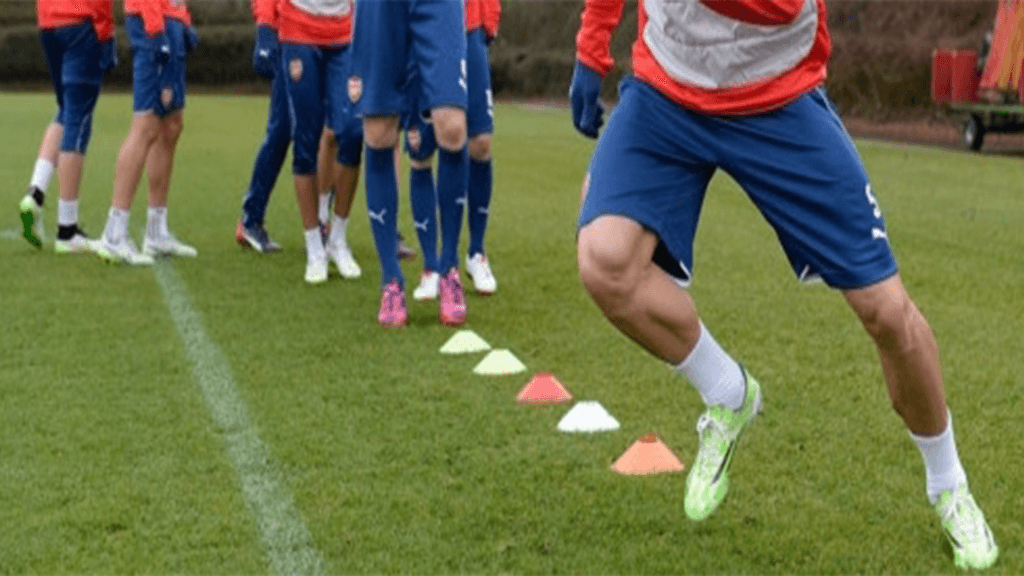
Flexibility Training for the upcoming football season
Whether it’s rugby union, league, AFL or soccer you play at an elite or social level, now is the time to start pre-training for the upcoming Winter season. We’ve written before about flexibility training, and there is much debate in professional circles as to which type of training is best for which sport. At the end of the day, studies have shown that increased flexibility can increase performance in some sports, and also greatly reduce the risk of injury (because let’s face it, sometimes our aging bodies can’t keep up with our teen like enthusiasm!)
What is flexibility?
Flexibility is defined as the range of motion of your joints or the ability of your joints to move freely. It also refers to the mobility of your muscles, which allows for more movement around the joints. Range of motion is the distance and direction your joints can move, while mobility is the ability to move without restriction.
Here are some excerpts from an article on Sport Fitness Advisor to give you more insight into the benefits and different types of flexibility training:
The Benefits of Flexibility Training
By increasing this joint range of motion, performance may be enhanced and the risk of injury reduced (3,4). The rationale for this is that a limb can move further before an injury occurs.
Tight neck muscles for example, may restrict how far you can turn your head. If, during a tackle, your head is forced beyond this range of movement it places strain on the neck muscles and tendons.
Ironically, static stretching just prior an event may actually be detrimental to performance and offer no protection from injury (5,6). The emphasis is on “may” however, as a closer examination of the scientific literature shows that effects are often minimal and by no means conclusive.
Muscle tightness, which has been associated with an increased risk of muscle tears (7,8), can be reduced before training or competing with dynamic stretching. For this reason many coaches now favor dynamic stretches over static stretches as part of the warm up.
Competitive sport can have quite an unbalancing effect on the body (9,10). Take racket sports for example. The same arm is used to hit thousands of shots over and over again. One side of the body is placed under different types and levels of stress compared to the other. The same is true for sports like soccer and Australian rules football where one kicking foot usually predominates. A flexibility training program can help to correct these disparities preventing chronic, over-use injury.
Of course, a more flexible athlete is a more mobile athlete. It allows enhanced movement around the court or field with greater ease and dexterity. Some other benefits may include an increase in body awareness and a promotion of relaxation in the muscle groups stretched – both of which may have positive implications for skill acquisition and performance.
Types of Flexibility and Stretching
1. Dynamic flexibility — the ability to perform dynamic movements within the full range of motion in the joint. Common examples include twisting from side to side or kicking an imaginary ball. Dynamic flexibility is generally more sport-specific than other forms of mobility.
2. Static Active flexibility — this refers to the ability to stretch an antagonist muscle using only the tension in the agonist muscle. An example is holding one leg out in front of you as high as possible. The hamstring (antagonist) is being stretched while the quadriceps and hip flexors (agonists) are holding the leg up.
3. Static Passive flexibility — the ability to hold a stretch using body weight or some other external force. Using the example above, holding your leg out in font of you and resting it on a chair. The quadriceps are not required to hold the extended position.
A flexibility training program can be made up of different types of stretching:
Dynamic stretching
Ballistic stretching
Static Active stretching
Static Passive stretching
Isometric stretching
PNF stretching
Which type of flexibility training is best?It depends on the sport and the athlete’s outcomes – something which will be examined more closely in the articles below. As a general rule, dynamic stretches are used as part of a warm up and static stretches or PNF flexibility training is used for increasing range of motion.
To read the full article and reference notes – click HERE . Don’t forget, Pilates is also a great form of flexibility training, and we’re always happy to customise a program specific to your sport and your current or desired body condition.
Related Articles:

Sorry, the comment form is closed at this time.